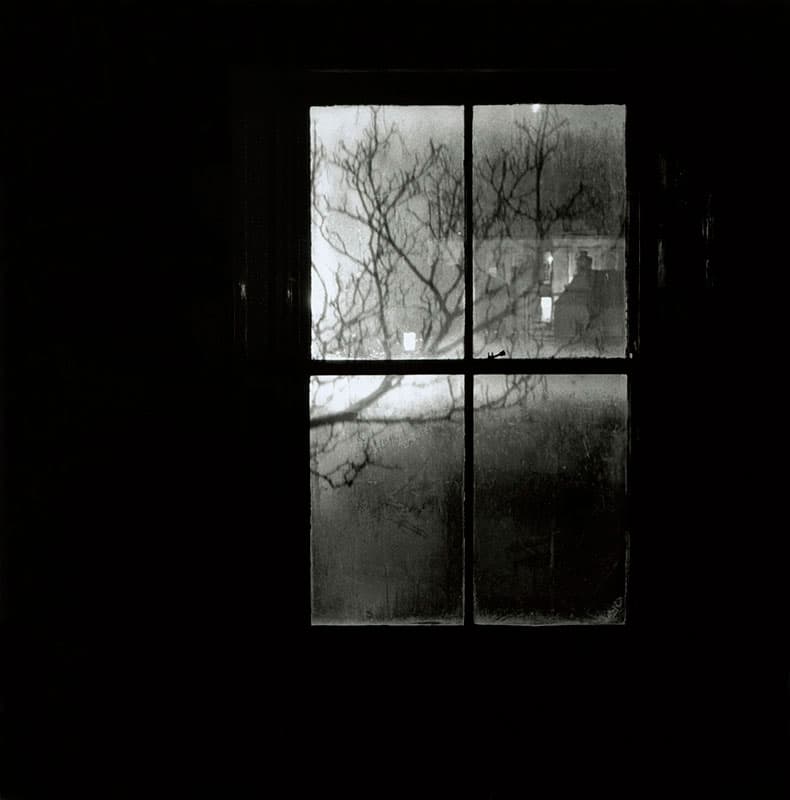Photo Insight with Andrew Sanderson

A renowned photographer, tutor, author and Ilford Master Printer, Andrew Sanderson offers practical tips on working with film and traditional darkroom techniques
This image is the view out of a window at night. It was taken in 1995 in the back room of a property I was refurbishing at the time. The place had been an antique shop and was to become an art gallery, and I was working every evening to decorate it and varnish the floorboards.
The gallery was called Sanderson, George and Peach, in Holmfirth, West Yorkshire, where I still live. I ran this gallery alongside my friend and artist, Debbie George, for ten years, before we decided to concentrate on exhibiting and publishing our own work instead. You can still see a little of what we were about via our blog site at sandersongeorgegallery.blogspot.com
I had been thinking about creating this photograph for some time before I actually picked up my camera. Every evening, when I packed up for the night to drive home, I would put out the lights and see the projected shapes of a tree branch on this window. The security light from a local property across the way was causing the shadow, and for about four nights I saw this shadow and thought it would make a good picture.
Each time I went over to work on the art gallery, though, I forgot to take my camera, until almost a week had passed since I first saw this composition. When I eventually took over my Yashica Mat 124G twin-lens camera and a tripod, I knew exactly how I was going to frame it and how I saw the final print – I wanted the room to be completely black, with no detail, as I thought this would detract from the subject.
As I had spent so long thinking about the scene before I eventually picked up the camera, I had time to work through all the possibilities and make sure I was making the right choices to create the atmosphere that I wanted within the images.

I had previsualised the photograph as an area of solid black with a lit window floating in the space. Where to position the window was important, too. I didn’t want it bang in the centre, so I placed it slightly to the right. I think this kind of consideration is very important in photography. It may seem a minor point, but it can make or break a picture. Imagine this same scene with the window centralised, or higher or lower: does it still hold the same weight or have the same impact? The smallest of decisions can affect your photos massively, so it’s always worth taking your time to really think every element through before you hit the shutter button. In the digital age, this is why people advocate taking lots of photographs of the same subject from different angles and viewpoints. However, when you’re shooting on film, as I was here, this is a luxury you can’t afford, so planning is essential.
I’m pleased with all the decisions that came together to create this picture. I love the look of this image, as it reminds me of German expressionist films (although at the time I didn’t set out to create this kind of look). In those films, shadows were often used for dramatic effect, and as I had this lovely shadow here, reaching out across the window with partially visible buildings and lights behind, how could I resist taking this shot?
I also love how the old windows seem as though they haven’t been cleaned for decades, giving an etched look to the glass. If the windows had been new, or if I had spent a night cleaning them before taking the photograph, the projected shadow wouldn’t have shown up. This is just one reason to be pleased about having murky windows, and one reason not to clean your own!
As I said earlier, the camera I chose to create this image with was a Yashica Mat 124G. Made from 1970-1986, it was the last TLR produced by Yashica. You can still pick these cameras up on eBay today for around £100, although auctions do start off lower. Shooting with film can help slow down the photographic process and make you think about your compositions in detail before you press the shutter release. Whatever film camera you use, I recommend you try it at least once to see how shooting with a limited number of exposures changes your photography.
Andrew Sanderson was talking to Debbi Allen

If you would like to read more about paper negatives, Andrew’s book Paper Negative Photography is available from www.blurb.com, price £15







